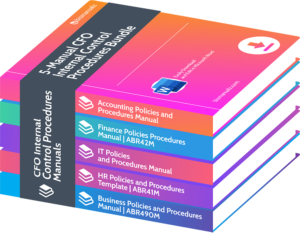What Should a CFO Know About Financial Benchmarking?

Are you a Chief Financial Officer (CFO) looking for ways to improve your company’s financial performance? Look no further, as financial benchmarking could be the answer you’ve been searching for. In today’s ever-changing business landscape, it’s crucial for CFOs to stay ahead of the competition and make data-driven decisions. In this article, we will dive into the importance of financial benchmarking and how it can benefit your company’s bottom line. What Should a CFO Know About Financial Benchmarking?
What is Financial Benchmarking?
Financial benchmarking is a practice in which a company measures its financial performance against that of its industry peers in order to assess its strengths and weaknesses. This allows CFOs to gain valuable insights into areas that may need improvement and to identify successful strategies used by other companies.
By comparing key financial ratios, such as profitability, liquidity, and efficiency, to industry averages or competitors, CFOs are able to make informed decisions and set achievable goals for their organization’s financial performance.
A helpful tip is to regularly update benchmarking data and adjust strategies accordingly in order to maintain sustained growth and competitiveness.
Why is Financial Benchmarking Important for a CFO?
Financial benchmarking is of utmost importance for a CFO due to its numerous benefits. Firstly, it allows CFOs to evaluate their company’s financial performance in comparison to their industry peers, thus identifying areas for improvement and competitive advantages.
This analysis is crucial in setting realistic goals and targets for the company’s financial well-being. Secondly, benchmarking offers valuable insights into industry trends and best practices, enabling CFOs to make informed decisions and adapt strategies accordingly.
Furthermore, benchmarking assists CFOs in identifying opportunities for cost-saving, optimizing resource allocation, and enhancing overall financial efficiency. Ultimately, financial benchmarking empowers CFOs to drive growth and profitability, making it an indispensable tool for financial decision-making.
What are the Key Metrics Used in Financial Benchmarking?
Financial benchmarking is a crucial tool for CFOs to assess the performance and health of their company. By comparing key metrics to industry standards and top performers, a CFO can identify areas of improvement and make informed decisions for the company’s financial future.
In this section, we will discuss the key metrics used in financial benchmarking, including profitability ratios, liquidity ratios, efficiency ratios, solvency ratios, and market value ratios. Each of these metrics plays a vital role in evaluating the financial strength and success of a company.
1. Profitability Ratios
Profitability ratios are crucial metrics for evaluating a company’s financial performance. Here are the steps to calculate and interpret profitability ratios:
- Gross Profit Margin: To measure the profitability of production, divide gross profit by revenue.
- Net Profit Margin: Assess overall profitability by dividing net profit by revenue.
- Return on Assets (ROA): Gauge the efficiency of asset utilization by dividing net profit by total assets.
- Return on Equity (ROE): Measure the return generated for shareholders by calculating net profit divided by shareholders’ equity.
Pro-tip: Identify areas for improvement and make informed financial decisions by comparing profitability ratios over time and against industry benchmarks.
2. Liquidity Ratios
Liquidity ratios are essential metrics used in financial benchmarking to evaluate a company’s ability to meet its short-term obligations. The two primary liquidity ratios are the current ratio and quick ratio. The current ratio measures a company’s ability to use its current assets to pay off short-term liabilities, while the quick ratio provides a more conservative measure by excluding inventory from current assets.
These ratios assist CFOs in assessing a company’s liquidity position and making informed decisions about its financial well-being. For instance, a CFO can utilize liquidity ratios to determine if a company has sufficient cash to cover immediate financial obligations, such as paying suppliers or employees.
After a sudden decrease in sales, a CFO utilized liquidity ratios to evaluate their company’s financial standing. By closely monitoring the current and quick ratios, they identified a potential liquidity concern and took proactive measures to enhance cash flow.
This included negotiating better terms with suppliers, optimizing inventory management, and implementing cost-saving strategies. As a result, the company was able to navigate through the challenging period and maintain a healthy level of liquidity, ensuring its stability and continued operations.
3. Efficiency Ratios
Efficiency ratios are key metrics used in financial benchmarking to assess how effectively a company utilizes its resources. To analyze efficiency ratios, CFOs can follow these steps:
- Calculate the efficiency ratios to determine how quickly inventory is sold, how efficiently the company collects payment from customers, how efficiently assets generate revenue, and how effectively fixed assets contribute to sales.
- Evaluate the return on equity ratio to assess how efficiently the company generates profits from shareholders’ investments.
By monitoring and improving these efficiency ratios over time, CFOs can enhance operational performance and optimize resource utilization.
4. Solvency Ratios
Solvency ratios are important measures used in financial benchmarking to evaluate a company’s long-term financial well-being and ability to fulfill its debt obligations. These ratios, including the debt-to-equity ratio, interest coverage ratio, and debt ratio, provide insight into the company’s asset coverage for its liabilities.
This data is crucial for informed decision making regarding capital structure, borrowing capacity, and overall financial stability. Interestingly, a high debt-to-equity ratio signals a greater risk of insolvency, while a lower ratio indicates stronger solvency and financial strength.
5. Market Value Ratios
Market value ratios are crucial for CFOs to use as a benchmark for financial assessment. These ratios provide insight into a company’s market value and performance. Here are some key market value ratios to consider:
- Price-to-Earnings (P/E) Ratio: Measures the relationship between a company’s stock price and its earnings per share.
- Price-to-Sales (P/S) Ratio: Calculates a company’s stock price relative to its sales per share.
- Price-to-Book (P/B) Ratio: Evaluates a company’s stock price compared to its book value per share.
- Dividend Yield: Indicates the annual dividend payment divided by the stock price, reflecting the return on investment.
- Market Capitalization: Represents the total market value of a company’s outstanding shares.
A CFO utilized market value ratios to assess their company’s performance against competitors. By analyzing the P/E ratios, they identified their stock was undervalued compared to industry peers. This realization prompted them to implement strategies to improve profitability and attract investors, resulting in a significant increase in the company’s stock price and market value.
How Can a CFO Use Financial Benchmarking to Improve Company Performance?
As a CFO, it is crucial to constantly strive for improvement and growth within your company. One powerful tool for achieving this is financial benchmarking. By comparing your company’s financial performance to industry standards and top performers, you can gain valuable insights and set realistic goals for improvement.
In this section, we will discuss the various ways in which a CFO can utilize financial benchmarking to enhance company performance, including identifying areas for improvement, setting achievable targets, and making informed business decisions based on industry data.
1. Identifying Areas of Improvement
Identifying areas of improvement is an essential step for a CFO when conducting financial benchmarking. Here are the necessary steps to follow:
- Conduct a thorough analysis of the company’s financial performance to identify any weak areas.
- Compare the company’s performance with industry benchmarks to gain a better understanding of any gaps.
- Analyze key financial ratios and metrics to pinpoint specific areas that require improvement.
- Identify any internal processes or operations that may be causing inefficiencies or hindering profitability.
- Engage with relevant stakeholders to gather insights and perspectives on areas that need attention.
- Create a detailed action plan with specific goals and targets to address the identified areas of improvement.
- Implement necessary changes, monitor progress, and make adjustments as needed.
In the early 2000s, a CFO utilized financial benchmarking to identify areas of improvement in their company’s cost structure. By analyzing industry benchmarks and key financial ratios, they were able to uncover inefficiencies in their supply chain. This discovery led to a restructuring of procurement processes, resulting in significant cost savings and improved profitability.
2. Setting Realistic Goals and Targets
Setting realistic goals and targets is crucial for a CFO when utilizing financial benchmarking to enhance company performance. To achieve this, follow these steps:
- Evaluate current financial performance and identify areas that require improvement.
- Analyze industry benchmarks to gain insight into the performance of similar companies.
- Establish specific and measurable goals based on the benchmark data.
- Take into consideration factors such as market conditions, company resources, and growth potential when setting targets.
- Create a timeline for achieving these goals and targets.
Pro-tip: Regularly monitor progress towards goals, make necessary adjustments, and celebrate milestones to keep the team motivated.
3. Making Informed Business Decisions
Making informed business decisions is an essential aspect of financial benchmarking for a CFO. Here are some steps to follow:
- Collect and analyze financial data from comparable companies in the industry.
- Identify trends and patterns in the data to gain insights into industry standards and best practices.
- Compare your company’s performance against the benchmarks to identify areas of improvement.
- Consider the specific circumstances and goals of your company to determine the most relevant benchmarks.
- Use the benchmarking data to inform strategic decision-making, such as resource allocation, pricing strategies, and investment opportunities.
By utilizing financial benchmarking to make informed business decisions, CFOs can drive company performance, mitigate risks, and stay ahead in a competitive market.
What Are the Challenges of Financial Benchmarking for a CFO?
As a CFO, financial benchmarking is a crucial tool in evaluating the performance of your company against industry standards. However, this practice comes with its own set of challenges that must be navigated carefully.
In this section, we will discuss the various obstacles that a CFO may face when conducting financial benchmarking. From finding comparable companies to gathering accurate and reliable data, and finally interpreting and applying the data, we will explore the intricacies of this important process.
1. Finding Comparable Companies
Finding comparable companies is crucial for effective financial benchmarking. To help a CFO in this process, here are the following steps to follow:
- Define industry and sector: First, determine the industry in which your company operates and narrow down to the specific sector.
- Identify key competitors: Next, research and identify companies that operate in the same sector and offer similar products or services.
- Gather financial data: Then, collect financial statements, annual reports, and other relevant data from the identified competitors.
- Analyze financial ratios: Compare financial ratios such as profitability, liquidity, efficiency, solvency, and market value ratios to evaluate performance.
- Consider qualitative factors: It is important to look beyond financial metrics and consider factors such as market share, customer base, and growth strategies.
By following these steps, CFOs can successfully find comparable companies and utilize financial benchmarking to enhance their company’s performance.
2. Gathering Accurate and Reliable Data
Gathering accurate and reliable data is crucial for effective financial benchmarking. To ensure the integrity of the data collected, CFOs should follow these steps:
- Define the specific data requirements for benchmarking.
- Identify reliable sources of data, such as industry reports, financial databases, and government publications.
- Verify the credibility of the data sources by checking their reputation and methodology.
- Validate the accuracy of the data by cross-referencing multiple sources and comparing against internal financial records.
By adhering to these steps, CFOs can gather accurate and reliable data, enabling them to make informed decisions and drive performance improvement within their organizations.
3. Interpreting and Applying the Data
When it comes to financial benchmarking, it is crucial for CFOs to interpret and apply the data effectively. Here are some steps to follow:
- Review the benchmarking data: Take the time to thoroughly analyze the data and understand its implications.
- Identify patterns and trends: Look for consistent patterns or trends that can provide insights into your company’s performance.
- Compare against benchmarks: Compare your company’s financial metrics against industry benchmarks to assess areas of strength and weakness.
- Identify areas for improvement: Use the data to identify specific areas where your company can improve its financial performance.
- Create action plans: Develop action plans based on the insights gained from the benchmarking data to address areas for improvement.
True story: A CFO used financial benchmarking data to identify a pattern of high inventory turnover in their company. By analyzing the data and applying it to their operations, they were able to streamline their inventory management processes and significantly reduce costs, leading to improved profitability.
What Are Some Best Practices for Financial Benchmarking?
When it comes to financial benchmarking, there are certain best practices that every Chief Financial Officer (CFO) should know. These practices can help a company stay competitive and make informed decisions about their financial strategies.
In this section, we will discuss the importance of choosing the right metrics for benchmarking, utilizing multiple sources of data, and regularly reviewing and updating benchmarks to ensure their accuracy and relevance. By following these best practices, a CFO can effectively use financial benchmarking to drive success for their organization.
1. Choose the Right Metrics
Selecting the appropriate metrics is crucial for effective financial benchmarking. Here are the steps to ensure you choose the right metrics:
- Identify your company’s goals and objectives.
- Align the metrics with your goals to measure the desired outcomes.
- Consider industry standards and best practices to determine relevant metrics.
- Ensure the metrics are measurable, reliable, and provide actionable insights.
- Regularly review and update the metrics to adapt to changing business needs.
In the early 20th century, Frederick Winslow Taylor introduced scientific management, emphasizing the importance of choosing the right metrics to improve productivity and efficiency in industrial operations.
2. Use Multiple Sources of Data
Using various sources of data is essential for effective financial benchmarking. By incorporating data from reliable industry reports, financial databases, market research firms, company financial statements, trade associations, and insights from peers and industry experts, CFOs can ensure a comprehensive and accurate analysis of their company’s performance.
Here are the steps to follow:
- Identify the key metrics to benchmark.
- Research and gather data from industry reports, financial databases, and market research firms.
- Utilize company financial statements and internal data.
- Consider data from trade associations and industry experts.
- Consult with peers and industry professionals to gather insights and comparative data.
In the early 2000s, a CFO faced challenges in benchmarking their company’s financial performance. However, by utilizing multiple sources of data, including industry reports, company financial statements, and insights from peers, they were able to identify areas of improvement and make informed business decisions. This resulted in significant improvements in profitability and overall company performance.
3. Regularly Review and Update Benchmarks
To ensure the effectiveness of financial benchmarking, CFOs should regularly review and update benchmarks. This can be achieved by following a set of steps:
- Establish a schedule: Set specific intervals for reviewing and updating benchmarks, such as quarterly or annually.
- Collect relevant data: Gather accurate and reliable financial data from internal sources, industry reports, and benchmarking databases.
- Analyze performance: Compare the company’s financial metrics against the regularly reviewed and updated benchmarks to identify areas of improvement or underperformance.
- Identify trends: Look for patterns and trends in the data to gain insights into the company’s financial performance over time.
- Adjust benchmarks: If necessary, update benchmarks to reflect changes in the industry or business conditions.
- Communicate findings: Share the results of the benchmarking analysis with key stakeholders to facilitate informed decision-making.
Regularly reviewing and updating benchmarks is crucial for CFOs to ensure that the benchmarks remain relevant and accurately reflect the company’s financial performance. By doing so, CFOs can make informed strategic decisions and drive improvements in company performance.
CFO Financial Benchmarking
Financial benchmarking is a technique used by businesses to evaluate their strengths and weaknesses by comparing their financial performance to that of their industry peers. This enables CFOs to discover effective tactics employed by other businesses and to obtain insightful knowledge about areas that might require improvement.
Financial performance benchmarks and industry averages can be used by CFOs to make well-informed decisions and establish realistic goals for their organization’s financial performance. Examples of these benchmarks include profitability, liquidity, and efficiency.
Frequently Asked Questions

What is financial benchmarking and why is it important for a CFO to know?
Financial benchmarking is the process of comparing a company’s financial performance and metrics against industry standards and best practices. It is important for a CFO to know because it provides valuable insights into the company’s financial health and allows for identifying areas for improvement.
How can financial benchmarking help a CFO make informed decisions?
Financial benchmarking provides a benchmark for a company’s financial performance, allowing a CFO to compare their data against industry averages and identify potential areas for cost-cutting or revenue growth. This helps in making informed decisions for the company’s financial strategy.
What are some key financial metrics that a CFO should focus on when conducting benchmarking?
Some key financial metrics to focus on when conducting benchmarking include profitability ratios, liquidity ratios, efficiency ratios, and leverage ratios. These metrics provide a comprehensive understanding of a company’s financial performance and how it compares to industry standards.
How often should a CFO conduct financial benchmarking for their company?
Financial benchmarking should be conducted regularly, at least once a year, to track the company’s financial performance and identify any changes or trends. Benchmarking can also be done when there are major changes in the industry or significant shifts in the company’s operations.
Can financial benchmarking be used for companies of all sizes and industries?
Yes, financial benchmarking can be used for companies of all sizes and industries. However, the key is to choose the right benchmarks and adjust them based on the company’s specific industry and size.
What are the potential risks of financial benchmarking for a CFO?
One potential risk of financial benchmarking is relying on inaccurate or incomplete data when comparing to industry standards. It is important for a CFO to ensure that the benchmarks used are relevant and reliable to make informed decisions. Additionally, comparing too closely to competitors may lead to a loss of focus on the company’s unique goals and strategies.
















Leave a Reply